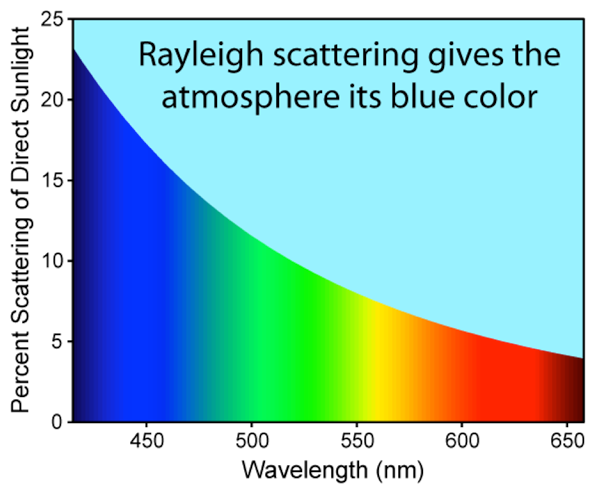Orange-Blue Sky
Today, an orange-blue sky. The University of Houston presents this series about the machines that make our civilization run, and the people whose ingenuity created them.
My earliest childhood memory is that of a color. I saw that color again recently. The memory is not a real memory but the memory of a photograph. It's a picture of me at age 3, standing on a beach on the Atlantic coast, squinting against the winter sun. What I remember is the color of the winter sky in that photograph — a crisp blue with a cold orange hue. My memory of my first trip to America is limited to that photograph and that color.
I grew up in Iran, closer to the equator, where I didn't see that sky color, and always wondered if the sky in America was really orange-Blue. Years later, when I lived at a higher latitude in Boston, I would see that sky color often. Down here in Houston, I hadn't seen it much until just a few days ago on a sunny January day. I was riding my bike when I saw it — a cloudless blue sky, crisp and brilliant, infused with an orange hue by the weak winter sun.
The blue color of the sky is due to a phenomenon known as Rayleigh scattering. As sunlight passes through the earth's atmosphere, the shorter wavelengths of blue are scattered more by oxygen and nitrogen molecules than the higher wavelengths of orange and red. This highly scattered blue light bounces around the atmosphere, giving it its blue color. In winter and at higher latitudes, sunlight passes more tangentially through the earth's atmosphere and travels a greater distance. As a result, some of the blue light is scattered away and more of the orange light reaches our eyes.
This explains the color but not the crispness of my orange-blue sky.
The crispness has to do with the way water droplets scatter light and a property known as color saturation. It turns out that the Rayleigh model only works when light is scattered by particles that are much smaller that the light's wavelength. But the sizes of tiny water droplets, like those suspended in Houston's summer air, are pretty close to the wavelengths of visible light. At this point the Rayleigh model breaks down and a different model, the Mie model which deals with larger particles, takes over. In Mie scattering, colors of different wavelengths are scattered to the same extent after collision with water particles, so there is no separation of colors, and a diffuse white light is scattered. This while light dilutes and reduces the saturation of the blue color of the summer sky. Conversely, the lack of humidity in the cold winter air increases the saturation or crispness of blue in the sky.
I kept all of these thoughts about wavelengths and particles out of my head that day as I pedaled serenely toward the sky I remembered from a childhood photograph.
I'm Peyman Pakzaban for the University of Houston, where we're interested in the way inventive minds work.

This graph shows that the lower wavelengths of sunlight (such as blue) are scattered more in the atmosphere than the higher wavelengths (such as orange and red). This empirical observation is explained by the Rayleigh model of atmospheric scattering and is responsible for the blue color of the sky. Photo Credit: Wikimedia Commons
(Theme music)
Diffuse Sky Radiation. Wikipedia: https://en.wikipedia.org/wiki/Diffuse_sky_radiation
Atmospheric Scattering. Severewx.com: http://www.severewx.com/Radiation/scattering.html
Blue Sky and Rayleigh Scattering. HyperPhysics: http://hyperphysics.phy-astr.gsu.edu/hbase/atmos/blusky.html
This episode first aired on February 6 , 2015.